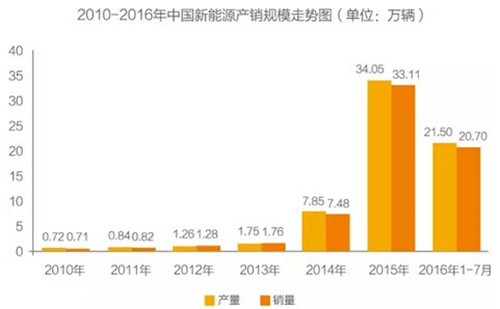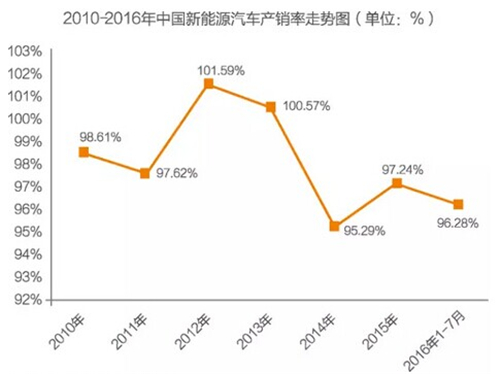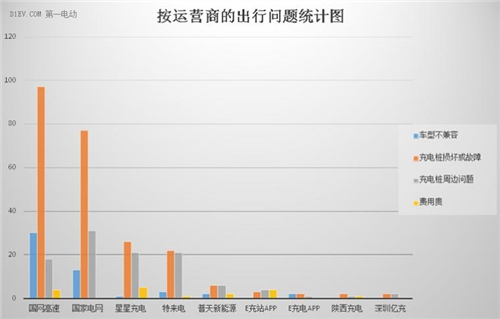The General Administration of Quality Supervision, Inspection and Quarantine, the National Standards Commission, the United Nations Energy Bureau, the Ministry of Industry and Information Technology, and the Ministry of Science and Technology have issued five new national standards for electric vehicle charging interfaces and communication protocols. On December 22, 2011, China promulgated its own four national standards for charging interfaces and communication protocols for electric vehicles. However, no detailed requirements are imposed on the details of current, voltage, power, etc. during charging. The five standard revision electric vehicle charging interfaces have finally achieved uniformity at the hardware and software levels, which has improved the safety and compatibility of charging. This article will make a detailed interpretation of the new national standard. The charging interface standard has been revised In 2006, China issued the "General Requirements for Plugs, Sockets, Vehicle Couplers and Vehicle Jacks for Conductive Charging of Electric Vehicles" (GB/T20234-2006). This national standard specifies the charging currents for 16A, 32A, 250A AC. The classification method of connection with 400A DC mainly draws on the standards proposed by the International Electrotechnical Commission (IEC) in 2003, but this standard does not specify the number of connection pins, physical dimensions and interface definition of the charging interface. In 2011, China introduced the GB/T20234-2011 recommended standard, replacing some of the contents of GB/T20234-2006, which stipulates that: AC rated voltage does not exceed 690V, frequency is 50Hz, rated current does not exceed 250A; DC rated voltage Not exceeding 1000V, the rated current does not exceed 400A. The new national standard charging interface standard has increased the voltage and current levels, and adjusted the size of the signal pin and mechanical lock, and clarified the relevant requirements of the electronic lock. On the other hand, the new standard has great benefits for charging equipment, and it is very helpful for the promotion and application of charging equipment. In the past, the charging equipment faced the problem of “who built it for useâ€. The national standard focused on the charging pile communication protocol, which means that the charging interface of the electric vehicle is finally unified in the standard level of hardware and software, which will improve the utilization rate of the charging equipment. . What changes have been made to the new national standard? Compared with the old standard, the new standard has changed a lot. Some of them are optimized in detail. For example, the charging interface standard has improved the voltage and current levels, which has improved the charging power, shortened the charging time, and adjusted the signal pin and machinery. Part of the size of the lock, optimized connection timing and so on. 1. General requirements The new national standard requires the installation of an electronic lock in the DC charging gun, while preserving the mechanical structure of the vehicle socket with the electronic lock. The implementation plan will be completed by the charging pile enterprise, and the vehicle enterprise may increase the control guiding circuit. The new national standard stipulates that when the AC charging current is greater than 16A, the power supply uncovering and the vehicle interface shall have a locking function, and the locking ground function shall comply with the relevant requirements of GB/T20234.1-2015. Electrical locks and vehicle sockets should be fitted with electronic locking devices to prevent accidental disconnection during charging. When the electronic lock is not reliably locked, the power supply or electric vehicle should stop charging or not start charging. When DC charging, the vehicle interface should have a locking function, which should meet the relevant requirements of GB/T20234.1-2015. The vehicle plug should be equipped with a mechanical locking device, and the power supply equipment should be able to determine whether the mechanical lock is securely locked. The electronic plug should be installed on the vehicle plug. When the electronic lock is in the locked position, the mechanical lock should not be operated. The power supply system should be able to determine whether the electronic lock is securely locked. When the electronic lock is not reliably locked, the power supply or electric vehicle should stop charging or not start charging. At the same time, the electronic locking device should have an emergency unlocking function, should not be charged, and should not be directly operated and unlocked by human hands. In addition, the general requirements also specify the functional description of the power supply interface and vehicle interface, interface temperature monitoring, magic current protector, power supply equipment overload and short circuit protection, emergency stop of charging, maintenance of power supply equipment and other requirements. 2. Refinement of communication protocols The past standards specify the definition of different signals in detail, and the new standard not only specifies the definition, but also specifies the transmission rate in various states, the judgment of the message timeout, the determination of the maximum current output, and the termination of the fault and message transmission. It also made provisions. In the new standard, the communication rate between the motor and the BMS is clearly defined. In the old standard, there is no restriction, only the recommended value is mentioned. According to the standard, in a special occasion where the communication environment is bad (such as a commercial vehicle charging battle with a long communication distance), the communication equipment manufacturer and the electric vehicle manufacturer can agree to use a communication rate of 50 kbit/s. The message options are divided into mandatory items and optional items. For all the contents of the same frame, the message is optional. The message can be selected and not sent. For some contents of the same frame, the content is optional. All options can be formatted according to the standard. Send or fill 1, invalid bits or fields not specified by the standard. Bits or reserved bits not specified by the standard are filled with 1. BRM adds 8 bytes for reservation, CML increases the minimum charge current field, CCS increases the charge pause field, and increases the cause of BMS abort charging failure. In addition, the charging sequence flow chart, the charging process troubleshooting method, the message start sending and the abort condition are added. 3. Modification of the charging interface According to reports, this revision focuses on the safety and compatibility of charging, and increases safety measures such as charging temperature monitoring, mechanical lock and electronic lock linkage, overload and short circuit protection, and improves charging control guidance and timing, fault classification information, Content such as redundancy protection improves the adaptability and operability of the standard. 3.1 AC charging interface part The AC power port for electric vehicle conduction charging is modified from no more than 32A to no more than 63A. If the power supply interface uses standardized plug sockets that comply with GB2099.1 and GB1002, it does not apply to these plug sockets. The rated current of the charging interface is increased by 10A and 63A. as the picture shows: The spare contacts are expanded to a three-phase charging function. as the picture shows: Added R4 resistor to the charging connection interface as shown: In addition, this standard revision removes the control guiding circuit and control principle, modifies the charging interface to control the part of the guiding contact and the mechanical lock, increases the drainage hole in the socket (optional), and the sealing ring seal is changed to Selected, modified the plug space size requirements. 3.2 DC charging interface part The maximum rated voltage of the charging interface has been modified. The rated voltage does not exceed 100V (DC) and the rated current does not exceed 250A (DC). The rated voltage of the charging interface is increased by 80A and 200A as shown: Adjust the contact coupling sequence in the charging connection process, the order is: protection grounding, charging connection confirmation (CC2), DC power supply and DC power supply negative, low voltage auxiliary power supply and low voltage auxiliary power supply, charging communication, charging connection confirmation (CC1); In the process of disengagement, the order is reversed. In addition, this new national standard deletes the DC charging control guiding circuit and control principle of charging mode 4; the charging interface controls the guiding contacts and the mechanical locking part size; the plugging space size requirements are modified. Charging standard certification and testing Tian Shihong, director of the National Standards Commission, said that the new standard ensures the interconnection of electric vehicles and charging facilities, avoiding the disorderly development of the market and charging “islandsâ€, which is conducive to reducing the waste of social resources caused by incompatibility. In the next step, the General Administration of Quality Supervision, Inspection and Quarantine and the National Standards Committee will work with relevant industry departments to promote the use of new standards for the certification and access management system for charging facilities, to promote charging facilities and electric vehicle manufacturers to organize production according to new standards, and to build and build charging facilities. It is necessary to update and upgrade according to the new standard. At the same time, the National Standards Committee will strengthen the development of charging facilities interoperability testing, charging station security, operational services and other supporting standards, providing technical support for the charging facilities management, operation, maintenance and other aspects. However, at present, the same as the previous national standard, testing and certification is a voluntary business, not mandatory. Zheng Jiejie, deputy director of the National Energy Administration, said that in the next step, the National Energy Administration will speed up the construction of charging infrastructure, further standardize the access to the charging infrastructure industry, and meet the new national standard as one of the conditions for market access for charging facilities. Application transformation In terms of interface standards, there are four technical solutions for DC charging in the world, namely, European standard, American standard, Japanese standard and Chinese standard. In terms of implementation, China charging pile will not be compatible with other standards. The products of foreign companies need to be improved and meet Chinese standards in the Chinese market. Regarding the problem of how the charging piles and electric vehicles that have been built and sold will be handled after the implementation of the new standards, the relevant person in charge of the National Standards Committee said, “For private cars that are charged in personal charging stations, and in the fixed lines for internal buses, The charging facilities and their vehicles for taxi charging do not have the problem of compatibility between old and new standards, and do not need to be modified; the built-up charging piles are mainly used for public charging piles. It is worth noting that since the charging interface also includes one end of the electric vehicle, the electric vehicle also needs to be modified. According to the new national standard, the electric vehicle must not only modify the communication protocol on the software, but also modify the control guiding circuit on the hardware. Therefore, if the owner needs to use the public charging pile in the future, it is necessary to upgrade the vehicle. If the charging pile of the private use can meet the daily power demand of the vehicle, the owner can also choose not to modify the vehicle. Corrosion-resistant
fluorine gold mica gaskets dozens of varieties, more than 1,000 kinds of
specifications, Changchun Taiyuan Fluorine Gold Mica Co., Ltd. produces
Corrosion-Resistant Gasket materials, manufacturers real materials, welcome
site visits. Corrosion-resistant fluorine gold mica gasket in the end Well
there, samples are provided free of charge. Changchun Taiyuan Mica Film
Production Base is looking forward to your visit. Can corrosion-resistant
gasket materials save money? Corrosion Resistant Mica Gasket Corrosion Resistant Mica Gasket,Corrosion Resistant Materials,Corrosion-Resistant Gasket,Corrosion Resistance Corrugated Composite Gasket Changchun City Taiyuan FluorphlogopiteCo. Ltd. , https://www.micaslice.com



October 19, 2019